Reviewing high end Ricoh digital cameras is turning out to be an expensive business for us. The first time we took a look at one – their fixed lens Ricoh GR compact – we ended up liking the camera so much we went straight out and bought the ruddy thing (but only after Ricoh had prised the review model out of our cold, snapping hands).

What got our apertures flapping about the Ricoh GR was its SLR-like controls, full manual exposure options, old school fast fixed lens and no-frills looks that made it a street shooters dream.
Once we’d shelled out the not inconsiderable £330 for the GR we found that it quickly earned its keep, becoming our favourite, carry-everywhere compact – and we still use it regularly, several years on.
Ricoh GX100
A year or so later, Ricoh released their GX100 compact which, despite its obvious similarities to the GR, was touted as a replacement for their more consumer orientated GX8 camera.
Although both shared the same discrete matte-black looks, the most biggest immediate difference between the GR and the GX100 was the inclusion of a zoom on the GX100, starting from an ultra wide-angle 24mm to a portrait-useful 70mm.
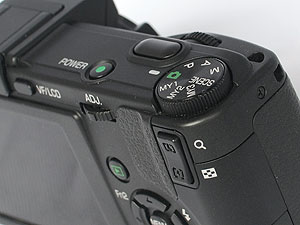
Although clearly not ideal for hunters of the lesser-spotted, purple headed sparrow or sports fans, this compact zoom range offered a perfect range for architecture fans, street shooters and landscape buffs.
The option to shoot in RAW (albeit with a 7 second gap between shots) underlined the camera’s upmarket aspirations, along with the same fantastic twin dial control system and vast array of manual controls offering SLR-like control.
Also of interest was the optional Electronic ViewFinder, which we suspect, proved something of a ‘love it or hate it’ affair for photographers.
Clipping on to the camera’s hotshoe, the EVF supplemented the 2.5″ LCD screen and let you snap shots with the viewfinder right next to your eye – Cartier Bresson style – with all the relevant exposure info displayed onscreen.
The quality wasn’t particularly wonderful, but we found it useful on certain occasions and we also liked the natty articulated feature which lets you shoot ground level pictures.
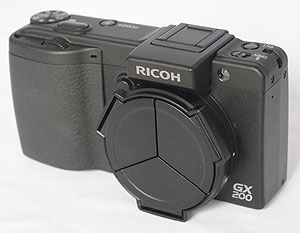
We ended up loving the camera so much our wallet creaked open once again, and it’s become out carry-everywhere digital compact of choice ever since, with the GR being relegated to social snapping.
Ricoh GX200
Announced near the end of 2008, the GX200 served up the same useful palette of pro-pleasing manual controls in the same 25mm thin rubberised case, hiking up the resolution up to 12 megapixels, and promising improved noise reduction with their new Smooth Imaging Engine III image processing engine.
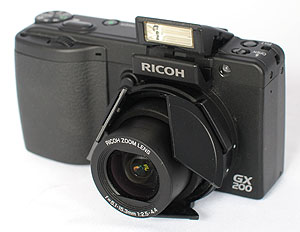
The same image stabilised 24mm-72mm lens is also onboard, while a larger 2.7-inch, 460,000 pixel HVGA LCD screen can be seen on in the back, with the folding EVF also optionally available. There’s also optional 19mm wideangle and 135mm tele conversion lens available.
The GX200 can now rattle off images at 5fps with an improved RAW mode allowing continuous shooting for up to five RAW format images at 1.18fps. The RAW files are saved in Adobe’s DNG format, which means just about any RAW editor will be able to process the files.
We found the addition of user-defined presets a revelation to fast shooting in the RX100, and the updated camera builds on this functionality, offering two one-push mode change function buttons, letting you, for example, swiftly jump from JPEG to RAW shooting or from colour to B&W.
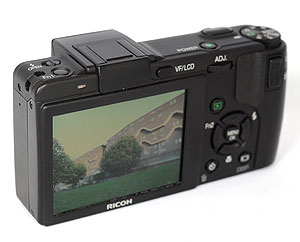
Keeping the creative options flowing is the ‘ADJ’ controller on the rear lets you quickly access five user-defined settings by spinning on the rear control wheel.
There’s a new light intensity adjustment function (-2.0 EV to +2.0 EV) and ‘1st Curtain’ and ‘2nd Curtain’ flash options, with the ISO sensitivity range now accommodating an ISO 64 setting.
We particularly liked the electronic level inherited from Ricoh’s fixed focal length GRD2 digi-compact – this uses an acceleration sensor to help keep the camera body perfect horizontal or vertical, with audio confirmation.
Shooting and image quality
We found the GX200 to be a nippy starter, with photos generally perfectly exposed and full of detail.
Of course, a little fella like this is never going to match the output of 12-megapixel DSLR, but at low ISOs, the performance was crisp and sharp and easily good enough for A3 printing.
With such a small 1/1.7-inch CCD sensor lurking inside, image quality deteriorates pretty fast as the ISO goes up, but with a bit of software tweaking we found images still usable for smaller prints up to 800ISO.
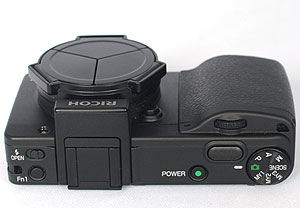
The Ricoh GX200 handled chromatic aberrations well, showing very small levels of purple fringing, and the macro performance was stellar, capable of capturing images just 1cm away from the lens.
We tested the camera with the 135mm tele conversion lens and were pleased with the results, although it’s a little fiddly attaching the lens.
The Anti-Shake worked well too, and we liked having a maximum shutter speed of 180 seconds for moody night shots.
It’s not all good through.
Ricoh’s propensity to overexpose faces with flash continues, and that lens cap simply asks to be lost (sure enough, our GX100 lens cap lasted a month before rolling off to pastures unknown).
To be fair, the GX does come with a little string for attaching the lens to the body, but we weren’t keen on having a lens cap flapping about when we were shooting.
Ricoh have, however, come up with a cunning optional solution in the shape of an ‘exploding’ lens cap that automatically opens up when the lens is extended. Neat.
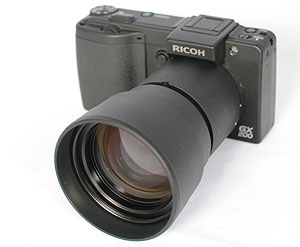
We still feel that Ricoh’s combination of dedicated twin dials, user presets and programmable function keys backed by an exceptionally fast, intuitive LCD interface makes it the best photographic control system available on any compact – once you’ve used a GX200 in anger, it’s pretty hard to go back to the more fiddly interfaces found on most compacts.
Battery life was good too, and we regularly got over 350 shots from a single charge.
One thing that should also be mentioned is Ricoh’s superb support for their cameras, both in the physical sense (they were quick to replace an earlier faulty camera with no fuss) and in the software area, with the company releasing useful functionality-adding firmware updates even two years after the camera’s release.
Compare that to most digital compact makers who seem to adopt a ‘dump and move on’ attitude to releases.
Although not quite good enough to beat the mighty Lumix LX3, the Ricoh GX200 is still a great choice for an enthusiast/pro photographer looking for a compact, carry-everywhere camera that offers you all the hands-on control you’ll get from a dSLR.
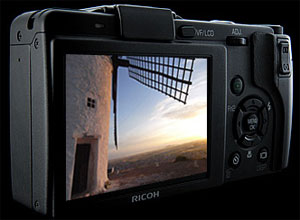
The Ricoh GX200 can be found online for around £280, with VF-1 electronic viewfinder kit version going for around £340.
Rating
Ease of use: 87%
Picture quality: 84%
Features: 90%
Value for money: 83%
Overall: 88%
Ricoh GX200 Specifications
CCD:
Effective 12.1 million pixels (total 12.4 million pixels), 1/1.7-inch primary-colour CCD
Lens:
Focal length: f=5.1 to 15.3 mm (35 mm film equivalent focal length 24 to 72 mm. With Step Zoom set,
the following fixed focal lengths possible: 24 mm, 28 mm, 35 mm, 50 mm, 72 mm)
Aperture (F value): F2.5 (wide) to F4.4 (telephoto)
Shooting Distance:
Normal shooting: Approx. 30 cm to infinity (wide-angle), approx. 30 cm to infinity (telephoto) (from the front of the lens) / Macro shooting: Approx. 1.0 cm to infinity (wide-angle), approx. 4.0 cm to infinity (telephoto), approx. 1.0 cm to infinity (zoom macro) (from the front of the lens)
Lens Construction:
11 glass elements in 7 groups
Zoom Magnification:
Optical zoom: 3x (35mm film equivalent focal length 24 to 72 mm)
Digital zoom: 4x, up to 12x (288 mm equivalent) in combination with optical zoom
Auto resize zoom: 6.3x, up to 18.9x (450 mm equivalent) in combination with optical zoom (VGA
image)
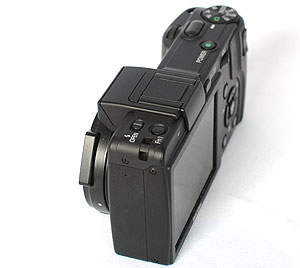 Focus Mode:
Focus Mode:
Multi AF (CCD method) / Spot AF (CCD method) / Manual Focus / Snap / Infinity (with focus lock and AF aux. light)
Motion Blur Reduction:
CCD shift method image stabiliser
Shutter Speed:
Still image: 180, 120, 60, 30, 15, 8, 4, 2, 1 to 1/2000 sec. / Movie: 1/30 – 1/2000 sec.
Exposure Adjustment:
Exposure Metering Mode: Multi Light Metering (256 segments) / Centre-weighted / Spot (TTL-CCD metering, AE lock available) Exposure mode: Program AE / Aperture Priority AE / Manual Exposure Exposure compensation: Manual Exposure Compensation (+2.0 to -2.0 EV in 1/3 EV steps) / Auto Bracket Function (-0.5 EV, ±0, +0.5 EV /-0.3 EV, ±0, +0.3 EV)
ISO Sensitivity (Standard Output Sensitivity):
AUTO / AUTO-HI / ISO64 / 100 / 200 / 400 / 800 / 1600
White Balance Mode:
Auto / Outdoors / Cloudy / Incandescent Lamp / Fluorescent Lamp / Manual Settings / Detail White balance bracket function
Flash:
Built-in Flash Mode: Auto (during low light and when subject is backlit) / Red-eye Flash / Flash On / Flash Synchro / Manual Flash (Full, 1/1.4, 1/2, 1/2.8, 1/4, 1/5.6, 1/8, 1/11, 1/16, 1/22, 1/32) / Flash Off / Built-in Flash Range: Approx. 20 cm to 5.0 m (wide-angle), approx. 15 cm to 3.0 m (telephoto) (ISO AUTO / ISO 400, from the front of the lens) Flash Compensation: ±2.0 EV (1/3 EV steps)
Picture Display:
2.7 inch Transparent Amorphous Silicon TFT LCD, approx. 460,000 dots
Shooting Mode:
Auto Shooting Mode / Program Shift Mode / Aperture Priority Mode / Manual Exposure Mode /
Scene Mode (Movie / Portrait / Sports / Landscape / Nightscape / Zoom Macro / Skew Correct Mode /
Text Mode) / My Settings Mode
Picture Quality Mode: F (Fine) / N (Normal) / RAW (DNG file format)
Number of Recorded Pixels:
Still image: [4:3] 4000×3000, 3264×2448, 2592×1944, 2048×1536, 1280×960, 640×480
[3:2] 3984×2656 / [1:1] 2992×2992 / Movie: 640×480, 320×240 / Text: 4000×3000, 2048×1536
Recording Media:
SD memory card, SDHC memory card (up to 16 GB), Internal Memory (approx. 54 MB)
Storage Capacity (No. of Pictures) (Internal 54 MB Memory):
Still image: 4000×3000 (RAW: 2 / F: 11 / N: 20), 3984×2656 (RAW: 2 / F: 13 / N: 23)
2992×2992 (RAW: 3 / (F: 15) / N: 27 3264×2448 (N: 30) / 2592×1944 (N: 48)
2048×1536 (N: 74) / 1280×960 (N: 133), 640×480 (N: 497)
Storage Capacity (Time) (Internal 54 MB Memory)
Movie: 640×480 / 30 frames/sec. (41 sec.), 640×480 / 15 frames/sec. (1 min. 22 sec.),
320×240 / 30 frames/sec. (1 min. 22 sec.), 320×240 / 15 frames/sec (2 min. 40 sec.)
Recording File Format:
Still image: JPEG (Exif Ver. 2.21)DCF, RAW (DNG) Movie: AVI (Open DML Motion JPEG Format Compliant)
Other Major Shooting Functions:
CONT. / S-CONT / M-CONT / Self-timer (operation time: approx. 10 sec. / 2 sec.), Interval Shooting (shooting interval: 5 sec. to 3 hr., in increments of 5 sec.), Colour Bracket, B&W (TE), Noise Reduction, Histogram, Grid Guide, Electronic Level, Hot Shoe
Other Major Playback Functions:
Auto Rotate, Grid View, Enlarged View (maximum 16x), Resize
Interface:
USB 2.0 High-Speed (mini B cable), Mass Storage / Audio Output 1.0Vp-p / Video OUT
Video Signal Format:
NTSC /PAL
Power Source:
Rechargeable Battery (DB60) x1 / AAA Dry Alkaline Battery x2 / AAA Nickel-Metal Hydride Battery x2 / AC Adapter (AC-4c Optional) 3.8V
Battery Consumption:
Based on CIPA Standard: DB-60 usage: approx. 350 pictures / AAA alkaline battery usage: approx. 30 pictures
Dimensions:
111.6 mm (W) × 58.0 mm (h) × 25.0 mm (d)
excluding projecting parts
Weight:
Approx. 208 g (excluding battery, SD memory card, and strap) Accessories: approx. 30 g (battery and strap)
Ricoh
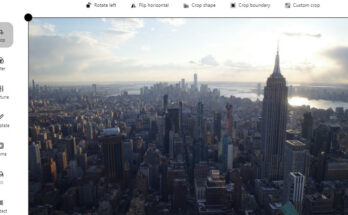
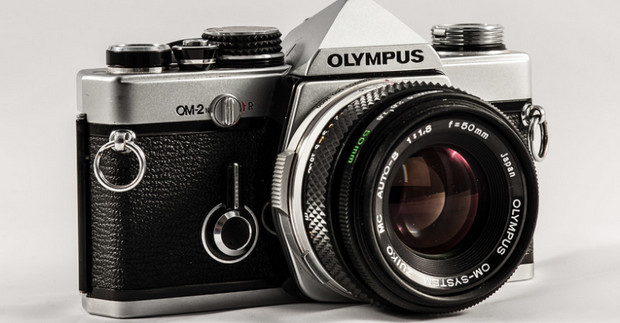
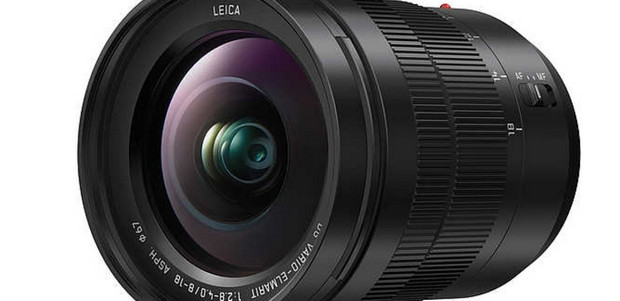
I’ve been torn between the GX200 and the LX3, but I think the LX3 nudges it in picture quality.